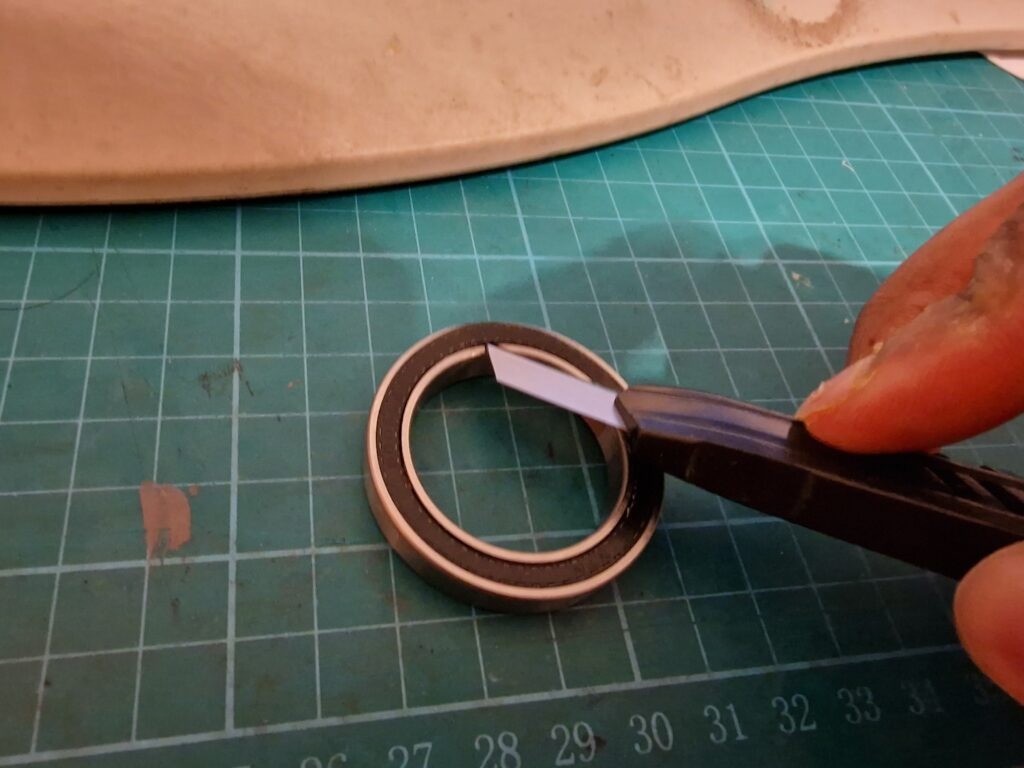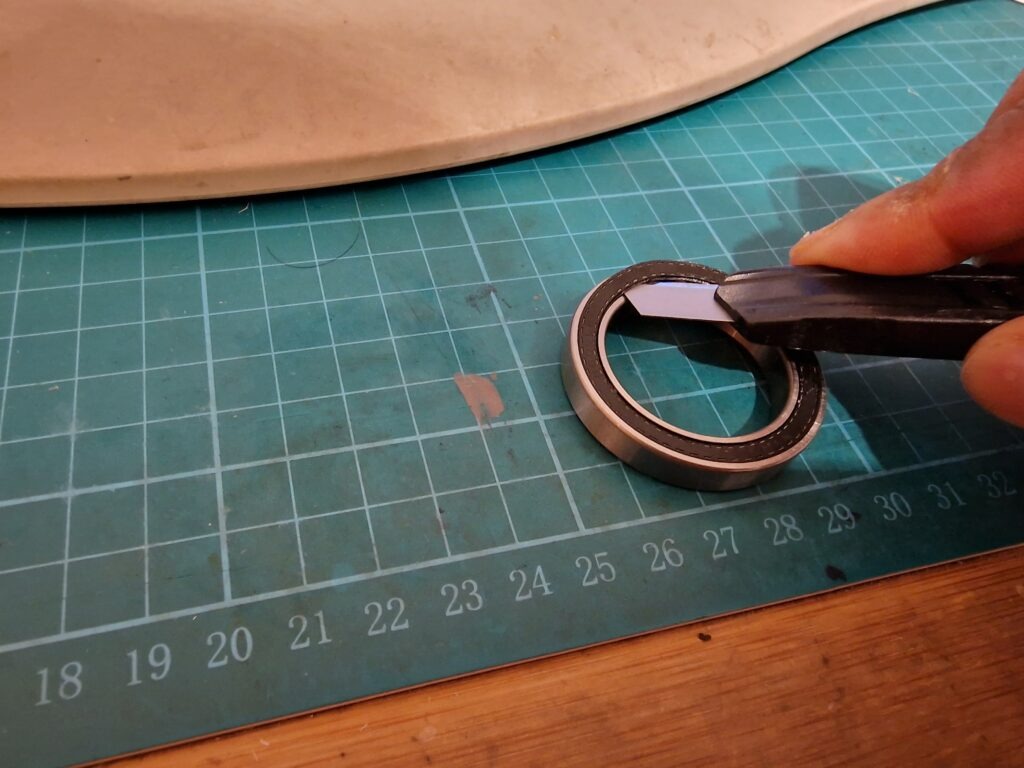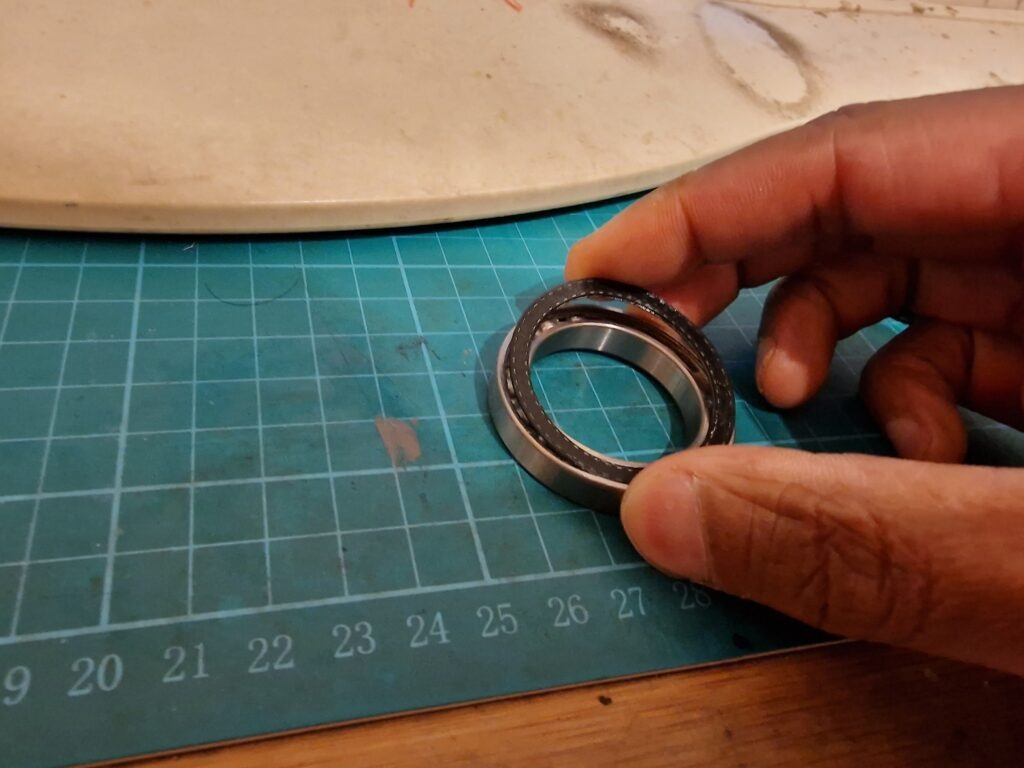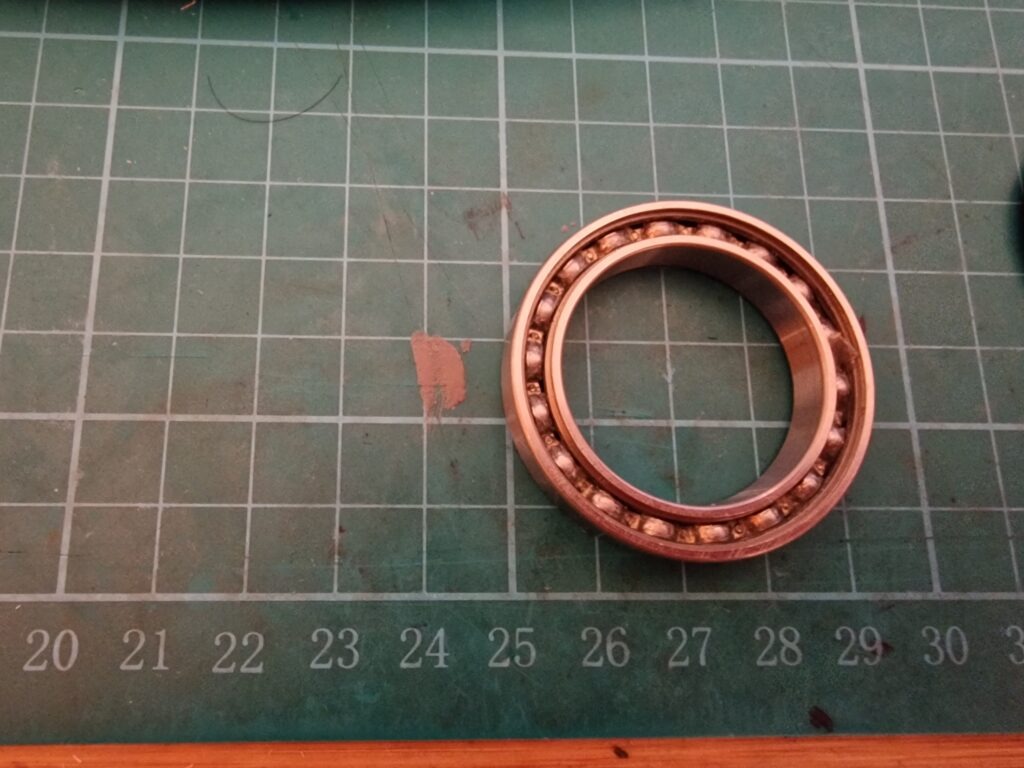Bearing Servicing and Maintenance
Introduction
Bearings will require periodic servicing to ensure adequate performance and maximum life.
Symptoms of bearings that require servicing include high drag, creaking, grinding and squeaking. The predominant factors that instigate a service are contamination and lack of lubricant. Lack of lubricant often manifests itself as squeaking and is colloquially called a “dry bearing”. Bearings do not have perfect seals and will “leak” lubricant through normal use. This is more prevalent in bearings with non-contact seals (e.g. NTN LLB).
The use of Muc Off, Silca, Dish Soap or any other type of degreaser is not recommended for ad hoc cleaning unless the bearing is to be fully serviced. Muc off contains salt, it will dissolve grease and remove the bearing’s lubrication.
Service Interval
Service intervals should be determined on an individual basis. Factors that affect the service interval are as follows:
- Riding Conditions –
- Rain
- Salt
- Snow
- Sand
- Type of Bearing
- Fully Contacting Seal (2RS, 2RS1, 2RSR, LLU)
- Non Contacting Seal (2RZ, 2BRS1, LLB)
- Type of Lubricant
- Grease or Oil Properties
Service Procedure
- Ensure the Area to be worked on is clean. Using a non-solvent cleaner such as dish soap or washing-up liquid is recommended.
- DO NOT remove the bearing from its housing (Bottom Bracket or Wheels). Removal of the bearing will usually result in the brinelling of the raceways. Bearings have been removed from housings in this guide for photographic purposes.
- Using a pick or a rounded-off knife blade, gently pry the bearing seal from the INSIDE towards the outside.

- Work the bearing seal loose all the way around and remove the seal.


- Flush the bearing with a degreaser and ensure all grease residue and dirt are removed
- Ensure all degreaser has evaporated.
- Refill the bearing with grease, and ensure it is only 33% to 50% full. Filling beyond this level will have a negative effect and reduce bearing performance and life.

Choice of Lubricants
Almost all bearings, especially sealed bearings, are prefilled with grease. Open bearings are typically coated in anti-corrosion oil.
Oil
Oil can be used in applications where the user requires minimal friction. The main disadvantage of oil lubrication is the very frequent service interval. 100km is a typical service interval. It is often used by time trialists. An ISO VG 46 or higher mineral oil is advised. Oil is generally specified for splash or pumped lubrication.
| ISO viscosity grade classifications | Midpoint kinematic viscosity, cSt @40°C | Kinematic viscosity, cSt @40°C Min | Kinematic viscosity, cSt @40°C Max |
|---|---|---|---|
| ISO VG 2 | 2.2 | 2.0 | 2.4 |
| ISO VG 3 | 3.2 | 2.9 | 3.5 |
| ISO VG 5 | 4.6 | 4.1 | 5.1 |
| ISO VG 7 | 6.8 | 6.1 | 7.5 |
| ISO VG 10 | 10 | 9.0 | 11.0 |
| ISO VG 15 | 15 | 13.5 | 16.5 |
| ISO VG 22 | 22 | 19.8 | 24.2 |
| ISO VG 32 | 32 | 29.8 | 35.2 |
| ISO VG 46 | 46 | 41.1 | 50.6 |
| ISO VG 68 | 68 | 61.2 | 74.8 |
| ISO VG 100 | 100 | 90.0 | 110 |
Grease
Grease is the default type of lubricant for most individuals. It consists of a base oil, thickener and additives. The thickness or viscosity of the grease can have a big effect on rolling drag and its ability to repel water. Generally, a thinner grease will result in lower friction at the expense of more frequent service intervals.
A common system for grease consistency is the NLGI scale. For general use, an NLGI 2 grease is recommended. For racing applications, an NLGI 0 or 00 grease is recommended.
| NLGI number | ASTM worked (60 strokes) penetration at 25 °C tenths of a millimeter | Appearance | Consistency food analogy |
|---|---|---|---|
| 000 | 445-475 | fluid | cooking oil |
| 00 | 400-430 | semi-fluid | apple sauce |
| 0 | 355-385 | very soft | brown mustard |
| 1 | 310-340 | soft | tomato paste |
| 2 | 265-295 | “normal” grease | peanut butter |
| 3 | 220-250 | firm | vegetable shortening |
| 4 | 175-205 | very firm | frozen yogurt |
| 5 | 130-160 | hard | smooth pâté |
| 6 | 85-115 | very hard | cheddar cheese |
